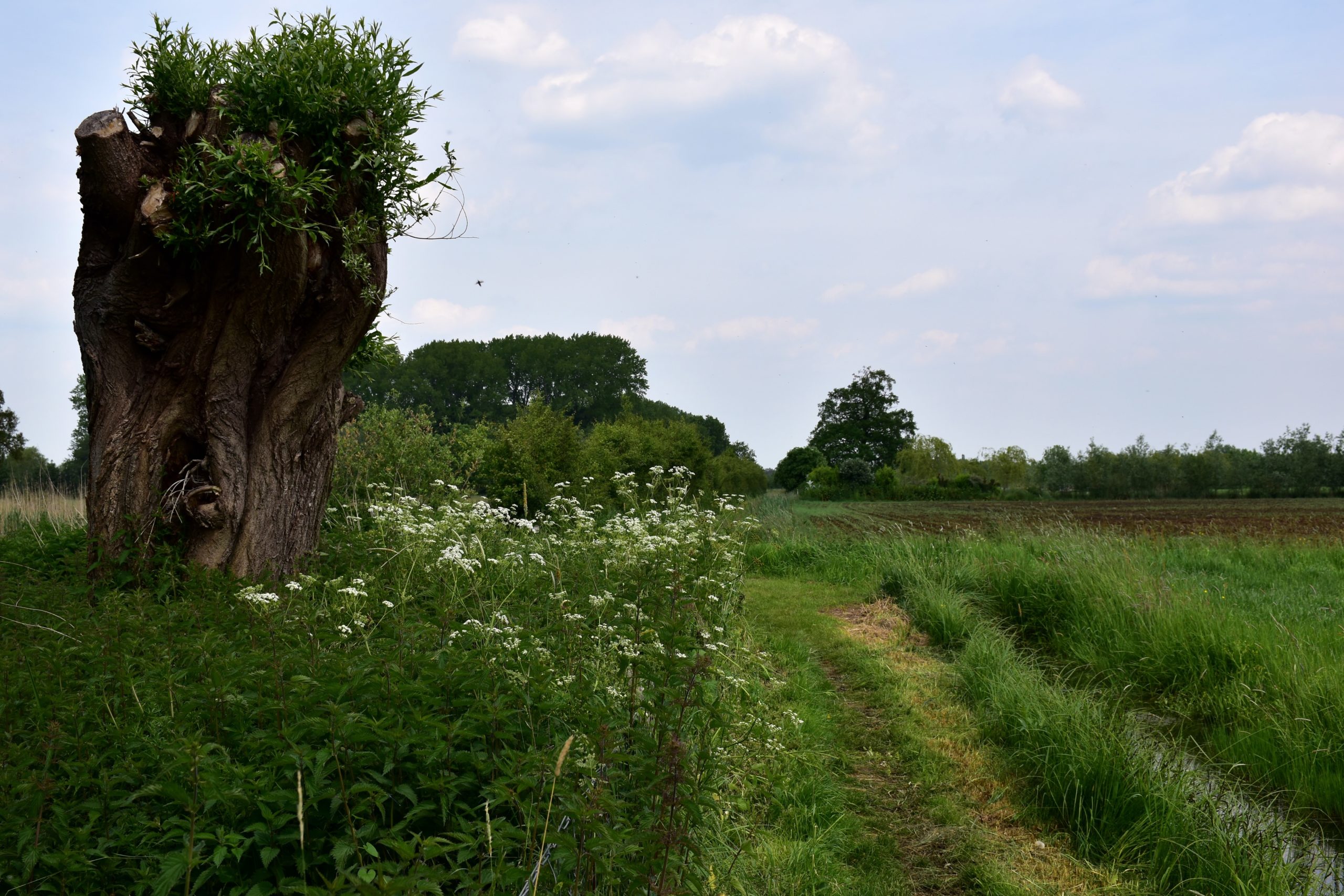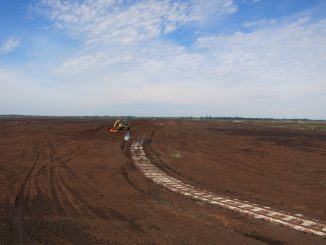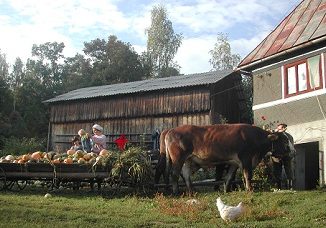
Encouraging farmers to implement practices that would contribute to mitigating global warming. That is the carbon farming promise. But can it live up to the hype? It might… if framed correctly. Will carbon farming be a greenwashing disaster or a real opportunity for farmers and climate change mitigation? We believe that both scenarios are possible, even though the first seems to be in ascendancy. Why is this? And what alternative implementation of carbon farming could we propose to try and avoid a fiasco? All this and more in our new report.
Read/download the REPORT: Carbon Farming: Stakes, issues and alternatives
Considering the EU agricultural context and urgency of reversing climate collapse, no tools or feasible solutions should be discarded without trying to make them fit for purpose. That is the spirit with which this report was written and why our main focus is to propose alternative implementations. Local governance is the main alternative that we propose. This proposal comes from our collaboration with the municipality of Plessé, in France.
With that said, it is also clear that the risks and issues linked to carbon farming as it is currently being implemented all over Europe have to be taken seriously and appraised meticulously.
Practices with Potential
In terms of carbon sequestration in soils, literature reviews indicate that the climate change mitigation capacity of carbon farming could range from 101 to 444 MtCO2eq/year. On the low end, this represents approximately 4% of the total EU emissions or 25% of the EU agricultural sector emissions. Those numbers don’t account for imported/exported emissions that can be added when considering imported feed linked to deforestation, but are still significant.
Moreover, soil conservation practices, one of the tools in the carbon farming toolkit, can help prevent and reduce soil erosion. It is important to note that soil erosion is about two times higher than soil formation in agricultural lands of the EU. According to the IPCC, reversing soil degradation should thus be prioritised to ensure long-term food security.
Carbon farming, as a set of practices, should be implemented. But the debate really starts when considering the business model for its implementation.

A business model with over-inflated risks?
The proposed business model for developing carbon farming is based on selling carbon credits on the voluntary carbon markets. This approach opens the door to various risks for our agricultural system and for climate change mitigation.
- How can we ensure that the purchase of carbon credits by companies does not delay needed emissions reductions?
- How can carbon farming be inclusive to all farmers, including the ones that have already been making efforts for some time?
- How can we ensure that the results will be permanent? Or, at least, for a long as the associated GHG’s persist?
- How can we ensure that the development of carbon farming through private finance will not impact land prices and accessibility?
- Should carbon credits offer compensation rights in all cases?
- Which companies should be able to purchase them?
These are some of the critical questions to which a regulation should provide answers.
However the proposal on carbon removal certification made by the Commission does not do adequately address these questions.It barely discriminates between nature-based removals and industrial removals. It was developed as a catch-all methodology for all carbon removal activities. Therefore, it lacks concrete information on specific risks inherent to specific removal activity types in farming. The criteria on which the Commission will base its decision for approving a certification scheme are too vague to ensure that greenwashing schemes be rejected. Overall it leaves many of the key questions it should tackle, open.
Local governance as the best alternative
The regulation proposal does not provide any tools for carbon farming to be adapted locally to accompany a broader transition of agrarian systems towards agroecology. Because of its large scope, it does not consider crucial aspects of the transition that are specific to the agricultural sector, such as the need to transition to extensive husbandry or the need to reduce reliance on chemical inputs.
Regional and local authorities can guarantee the development of projects based on cooperation within the supply chain and provide the link to territorial needs as well as to regional strategies for reducing agricultural greenhouse gases.
That is why we collaborated with the municipality of Plessé to make a proposition for a locally managed carbon farming. This collaboration can already teach us a valuable lesson: There is a will and energy for a bottom-up approach to carbon farming. Civil society organisations, farmers and citizens want to get involved with this topic and their energy should be used to work on finding solutions to the various carbon farming issues.
With the right support, the municipality of Plessé is willing to be a test unit for a local implementation of carbon farming. Here is how it could happen:
- A launch event with a round table to present the issues and the system to all the inhabitants.
- Constitution of a citizen convention of about a hundred people, including the agricultural committee, farmers from the commune, representatives of the various CUMAs (agricultural cooperatives), and citizens chosen randomly.
- Increasing the skills of the members of the convention through training / interventions by scientists, practitioners, certified carbon assessment organisations etc.
- Democratic debate led by the members of the convention on the virtuous agricultural practices that would be developed in the municipality.
- Carbon assessments are carried out on farms that wish to do so.
- The convention proposes a local carbon farming charter, with a bonus for practices with co-benefits in the area. This charter could be submitted to a referendum. It would establish a sort of reward scale for practices. Already virtuous farms would be financially encouraged to continue, while the less virtuous would be encouraged and financially supported to change their practices.
- The convention will determine which carbon emitting businesses in the area should be included in the program and could buy carbon emission rights.
- A contract inspired by the REO (Real Environmental Obligations) is signed between the municipality and the farmers who commit to the scheme to ensure the sustainability of the practices and the financial benefits on the long term (up to 99 years, even in the event of a change of farmer).
- The municipality pays the farms according to the charter’s scale and sells carbon certificates or credits to local businesses.
- Extension of the system to the whole agglomeration.
ARC’s new report
Want to learn more about this? About carbon farming practices, criteria such as result permanence or additionality, the voluntary carbon markets, CAP compatibility, the impact on land speculation? Want to explore other carbon farming alternatives such as non-compensatory certificates?
To investigate further into carbon farming and understand its intricate risks and possible alternatives, we invite you to read our new report.
More:
Meet the Movement Linking Civil Society with Philanthropy for Food System Transformation
Is the EU Positive about Reaching Carbon Negative? New ARC report shows more work needed
Protest, Pesticides and the Parliament – European news round up
Position Paper on Soil Carbon Sequestration and its Possible Remuneration through CO2 Certificates
COP26 | Gender Day – Othering The Soil, And Other Climate Blindspots
A Soil Scientist’s Perspective – Carbon Farming, CO2 Certification & Carbon Sequestration in Soil






1 Trackback / Pingback
Comments are closed.